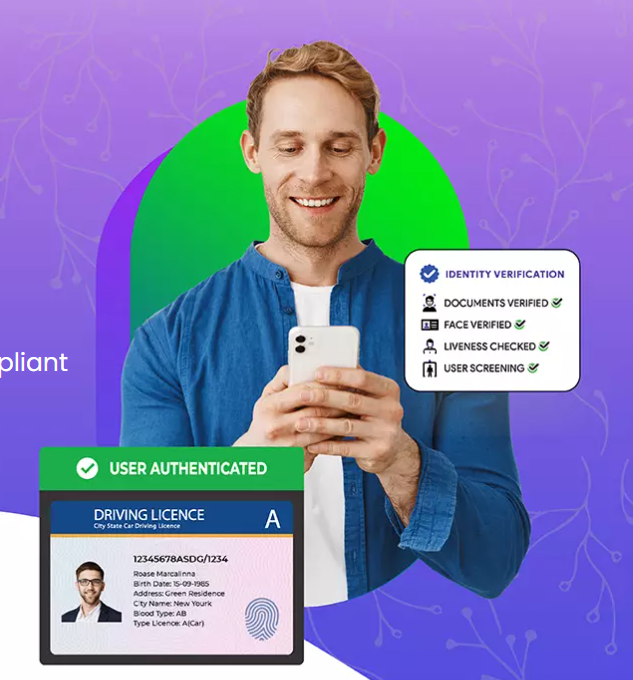In today’s rapidly evolving digital landscape, businesses face increasing challenges in ensuring secure transactions and maintaining regulatory compliance. Two key solutions that have emerged to address these challenges are document verification services and anti-money laundering (AML) verification. These tools are essential for mitigating risks, preventing fraud, and safeguarding the integrity of financial systems.
Understanding Document Verification Services
Document verification services play a crucial role in verifying the authenticity of documents submitted by individuals or businesses. These services use advanced technology to validate documents such as:
- Passports
- Driver’s Licenses
- Identity Cards
- Utility Bills
By utilizing AI-driven tools and optical character recognition (OCR), document verification services can identify forged or tampered documents with precision. These technologies analyze specific features, such as watermarks, fonts, and holograms, ensuring that only genuine documents pass the verification process.
Benefits of Document Verification Services
- Enhanced Security: Verifying documents helps to protect businesses from identity theft and fraudulent activities.
- Faster Onboarding: Automated document verification speeds up the onboarding process, improving customer satisfaction.
- Global Reach: These services support multiple languages and document types, making them ideal for global businesses.
- Regulatory Compliance: They ensure businesses comply with local and international regulations, such as KYC (Know Your Customer) requirements.
What is AML Verification?
Anti-Money Laundering (AML) verification is a critical process that helps businesses detect and prevent financial crimes. AML verification involves identifying and monitoring suspicious activities that may indicate money laundering or financing of terrorism. This is especially important in industries such as:
- Banking and Finance
- Cryptocurrency Exchanges
- Real Estate
- E-commerce
AML verification relies on a combination of technology and regulatory frameworks to identify high-risk individuals and transactions. Key components of AML verification include:
- Customer Due Diligence (CDD): Assessing the risk level of new customers.
- Transaction Monitoring: Analyzing financial transactions for unusual patterns.
- Sanctions Screening: Cross-checking customer data against global watchlists.
- Enhanced Due Diligence (EDD): Conducting deeper checks for high-risk customers.
Why AML Verification is Crucial
- Preventing Financial Crimes: AML verification helps identify illicit activities, protecting businesses and society.
- Building Trust: Ensuring compliance with AML regulations enhances customer and stakeholder trust.
- Avoiding Penalties: Non-compliance with AML laws can result in hefty fines and legal repercussions.
Integration of Document Verification and AML Verification
The synergy between document verification services and AML verification offers a robust solution for businesses aiming to maintain compliance and security. When integrated, these systems provide a seamless way to:
- Authenticate customer identities in real time.
- Identify high-risk profiles and mitigate potential threats.
- Streamline compliance processes, reducing manual workloads.
Key Technologies Driving Integration
- Artificial Intelligence (AI): Enhances accuracy and efficiency in verifying documents and detecting anomalies.
- Blockchain: Ensures data integrity and provides a transparent audit trail.
- Machine Learning (ML): Improves the ability to detect patterns and predict risks over time.
- Biometrics: Adds an extra layer of security through facial recognition and fingerprint matching.
Industry Applications
Financial Services
Banks and financial institutions use document and AML verification to comply with KYC and AML regulations, protecting against fraud and ensuring secure transactions.
Online Marketplaces
E-commerce platforms rely on these services to verify sellers and buyers, ensuring trust and reducing fraudulent listings.
Cryptocurrency
AML verification is critical for cryptocurrency exchanges to prevent illicit activities, such as money laundering and fraud.
Best Practices for Implementing Verification Services
- Choose Reliable Providers: Opt for trusted service providers with a proven track record.
- Stay Updated: Ensure your systems comply with the latest regulations and standards.
- Educate Employees: Train staff to recognize fraudulent activities and understand compliance protocols.
- Adopt a Holistic Approach: Combine document and AML verification with other security measures for comprehensive protection.
Conclusion
Document verification services and AML verification are indispensable tools in today’s digital and regulatory landscape. By leveraging these technologies, businesses can enhance security, streamline operations, and maintain compliance with global standards. As threats evolve, adopting these services ensures businesses remain resilient and trustworthy, paving the way for sustainable growth in a competitive market.





Comments